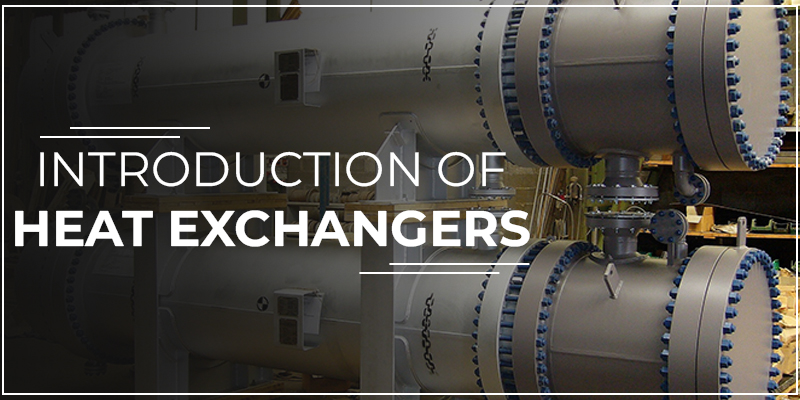
Heat exchangers are devices that transfer heat from one fluid to another fluid without the two fluids mixing. There are several types of heat exchangers. Each type of heat exchangers has its own set of advantages and specific applications. Some common types of heat exchangers used in the industry are:
-
Shell and Tube Heat Exchangers:
Shell and Tube Heat Exchangers are the most common type of heat exchangers used in different industry applications. They are named such because they consist of a shell with a bundle of tubes inside. One fluid flow through the tubes, while the other fluid flows through the shell around the tubes. They are widely used in industries like chemical, petrochemical, power, and food processing. -
Plate Heat Exchangers:
These type of heat exchangers consists of a series of thin plates with large surface area around. The fluids flow through different alternate channels between these plates. These are used commonly in HVAC systems. Industries like refrigeration, and food and beverage also use these type of heat exchangers. -
Air Cooled Heat Exchangers:
These type of heat exchangers use air as the main cooling medium. The hot fluid flows through tubes, and the tubes are exposed to the air flow. They are used in chemical and petrochemical plants and in power generation. -
Double Pipe Heat Exchangers:
These are simple heat exchangers consisting of two pipes, one inside the other. The hot fluid flows through the inner pipe, and the cold fluid flows through the annular space between the two pipes. They are used in small-scale applications, such as in laboratories and for small heating or cooling processes. -
Spiral Heat Exchangers:
These heat exchangers have two spiral channels that are wound around a central core. The fluids flow through the channels in opposite directions. They are used in applications where fouling is a problem, such as wastewater treatment.
These are just a few examples of the types of heat exchangers currently used in different industry applications. The choice of heat exchanger type depends on the specific application and the requirements for heat transfer efficiency, pressure drop, temperature range, and corrosion resistance.
Sunstream’s Mechanical design and 3D modeling services group has experience in designing, providing 3D modeling services support in different heat exchanger designs.
Generalized Design Procedure Of Heat Exchanger
Going to the details of heat exchanger designs are out of the scope of this article. Below are some generic steps of the design process.
- Process conditions (stream compositions, flow rates, temperatures, pressures) must be specified.
- Required physical properties over the temperature and pressure ranges of interest must be obtained.
- The type of heat exchanger to be employed is chosen.
Fig.1- 3D model of Shell & Tube Heat Exchanger

4. A preliminary estimate of the size of the exchanger is made, using a heat transfer coefficient appropriate to the fluids, the process, and the equipment.
5. Conceptual design is developed with necessary details feed in to carry out the design calculations. The design chosen is now evaluated or rated, for its ability to meet the process specifications with respect to heat duty and pressure drop. Outcome of the result will be observed and if needed, new configuration is chosen again by repeating above steps.
6. If conceptual design is inadequate to meet the required heat load, as a standard practice to increase the size of the exchanger, while remaining within specified or feasible limits of pressure drop, tube length, shell diameter, etc. This will sometimes lead to develop multiple exchanger configurations.
7. If conceptual design performance meets above the heat load requirements or does not use all the allowable pressure drop, a less expensive exchanger can usually be designed to fulfil process requirements.
8. The final design should meet process requirements (within the allowable error limits) at lowest cost. The lowest cost should include operation and maintenance costs and credit for ability to meet long-term process changes as well as installed (capital) cost.
Fig.2- Basic Design Procedure of Heat Exchanger

Sunstream’ s engineering team has years of experience in handling heat exchanger design, 3D modelling services, calculations, and detailing. Sunstream’s team has worked with different equipment manufacturers in designing heat exchangers for different needs. If you are an equipment manufacturer who needs support in heat exchanger design or a plant which requires design assistance, Sunstream’s engineering team has the right solution for you.



 +1.585.935.7123
+1.585.935.7123 +91-804-148-6861
+91-804-148-6861